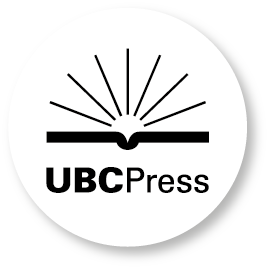Mapping "Race"
Critical Approaches to Health Disparities Research
The essays in this unique book argue for the inclusion of race as a social construction in the design of large-scale data collection efforts and how scientists must utilize race in the context of specific research questions. This landmark collection concludes on a prescriptive note, providing an arsenal of multidisciplinary, conceptual, and methodological tools for studying race specifically within the context of health inequalities.
Comrades in Health
U.S. Health Internationalists, Abroad and at Home
Structural Intimacies
Sexual Stories in the Black AIDS Epidemic
Structural Intimacies brings together scholarship on the structural dimensions of the AIDS epidemic and the social construction of sexuality to address the continuing HIV epidemic in the Black population, It asserts that shifting forms of sexual stories, structural intimacies, are emerging and presents a compelling argument: in an era of deepening medicalization of HIV/AIDS, public health must move beyond individual-level interventions to community-level health equity frames and policy changes.
The Door of Last Resort
Memoirs of a Nurse Practitioner
This memoir describes the education of nurse practitioners, their scope of practice, their abilities to prescribe medications and diagnostic tests, and their overall management of patients’ acute and chronic illnesses. In doing so, it explores the issues in primary health care delivery to poor, urban populations and investigates the factors affecting health care delivery in the United States that have remained obscure throughout the current national debate.
Making the American Mouth
Dentists and Public Health in the Twentieth Century
In the Public Interest
Medical Licensing and the Disciplinary Process
In the Public Interest investigates the mechanisms that democratic societies have used to certify that those working as licensed doctors are properly trained and supervised as they deliver critical services to the public. It analyzes the workings of the crucial public institutions charged with maintaining the safety and legitimacy of the U.S. medical profession and provides prescriptive measures, addresses problems in need of reform, and suggests new procedures, resource allocation, and education in medical oversight.
The Vulnerable Empowered Woman
Feminism, Postfeminism, and Women's Health
The Vulnerable Empowered Woman assesses the state of women’s healthcare today by analyzing popular media representations—television, print newspapers, websites, advertisements, blogs, and memoirs—in order to understand the ways in which breast cancer, postpartum depression, and cervical cancer are discussed in American public life. Tasha N. Dubriwny’s analysis concludes with a call to re-politicize women’s health through narratives that can help us imagine women, and their relationship to medicine, differently.
Beyond Health, Beyond Choice
Breastfeeding Constraints and Realities
Beyond Health, Beyond Choice is a multidisciplinary collection of essays written by thirty-seven contributors that examines the role of feminist theory in the promotion of breastfeeding by public health authorities. Essays are arranged thematically and consider breastfeeding in relation to health care; work and family; embodiment (specifically breastfeeding in public); economic and ethnic factors; guilt; violence; and commercialization.
The Health Care Safety Net in a Post-Reform World
The Health Care Safety Net in a Post-Reform World examines how national health care reform will impact safety net programs that serve low-income and uninsured patients. With contributions from leading health care scholars, it is the first comprehensive assessment of the safety net following enactment of national health care reform.
The Morning After
A History of Emergency Contraception in the United States
The Morning After tells the story of emergency contraception in America from the 1960s to the present day and, more importantly, it tells the story of the women who have used it. Side-stepping simplistic readings of these women as either radical feminist trailblazers or guinea pigs for the pharmaceutical industry, medical historian Heather Munro Prescott offers a portrait of how ordinary women participated in the development and popularization of emergency contraception, bringing a groundbreaking technology into the mainstream with the potential to alter radically reproductive health practices.










